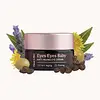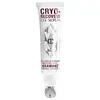What's inside
What's inside
 Key Ingredients
Key Ingredients

 Benefits
Benefits

 Concerns
Concerns

 Ingredients Side-by-side
Ingredients Side-by-side

Water
Skin ConditioningAloe Barbadensis Leaf Juice
Skin ConditioningCarthamus Tinctorius Seed Oil
MaskingGlycerin
HumectantHelianthus Annuus Seed Oil
EmollientStearic Acid
CleansingGlyceryl Stearate
EmollientCetyl Alcohol
EmollientStearyl Alcohol
EmollientAlgae Extract
EmollientTaraxacum Officinale Extract
Skin ConditioningCarbomer
Emulsion StabilisingXanthan Gum
EmulsifyingSodium Carbomer
Emulsion StabilisingNiacinamide
SmoothingSqualane
EmollientPalmitoyl Tripeptide-1
Skin ConditioningCaffeine
Skin ConditioningTocopheryl Acetate
AntioxidantEscin
TonicButylene Glycol
HumectantAlcohol
AntimicrobialLecithin
EmollientCentella Asiatica Extract
CleansingPalmitoyl Tetrapeptide-7
Skin ConditioningPolysorbate 20
EmulsifyingSodium Hyaluronate
HumectantPotassium Phosphate
BufferingPhenoxyethanol
PreservativeGlyceryl Stearate Citrate
EmollientLavandula Angustifolia Oil
MaskingEthylhexylglycerin
Skin ConditioningGeranium Maculatum Extract
TonicCamellia Sinensis Leaf Extract
AntimicrobialWater, Aloe Barbadensis Leaf Juice, Carthamus Tinctorius Seed Oil, Glycerin, Helianthus Annuus Seed Oil, Stearic Acid, Glyceryl Stearate, Cetyl Alcohol, Stearyl Alcohol, Algae Extract, Taraxacum Officinale Extract, Carbomer, Xanthan Gum, Sodium Carbomer, Niacinamide, Squalane, Palmitoyl Tripeptide-1, Caffeine, Tocopheryl Acetate, Escin, Butylene Glycol, Alcohol, Lecithin, Centella Asiatica Extract, Palmitoyl Tetrapeptide-7, Polysorbate 20, Sodium Hyaluronate, Potassium Phosphate, Phenoxyethanol, Glyceryl Stearate Citrate, Lavandula Angustifolia Oil, Ethylhexylglycerin, Geranium Maculatum Extract, Camellia Sinensis Leaf Extract
Water
Skin ConditioningGlycereth-26
HumectantTriheptanoin
Skin ConditioningMaltodextrin
AbsorbentMethyl Gluceth-20
HumectantCamellia Oleifera Seed Oil
Skin ConditioningButyrospermum Parkii Oil
EmollientPhenoxyethanol
PreservativeAlcohol
AntimicrobialLecithin
EmollientCaesalpinia Spinosa Gum
Skin ConditioningDimethyl Isosorbide
SolventPolysorbate 20
EmulsifyingGlyceryl Stearate
EmollientSilica
AbrasiveOctyldodecyl Oleate
EmollientBenzyl Alcohol
PerfumingGlycerin
HumectantCaffeine
Skin ConditioningPEG-100 Stearate
Carbomer
Emulsion StabilisingOctyldodecyl Stearoyl Stearate
EmollientSodium Gluconate
Skin ConditioningSodium Hyaluronate
HumectantChondrus Crispus Extract
Skin ConditioningAscophyllum Nodosum Extract
Skin ConditioningEscin
TonicSodium Hydroxide
BufferingTocopheryl Acetate
AntioxidantAloe Barbadensis Leaf Juice
Skin ConditioningRosa Canina Fruit Extract
AstringentPolyhydroxystearic Acid
EmulsifyingOctyldodecanol
EmollientPotassium Phosphate
BufferingBiosaccharide Gum-4
Skin ConditioningPlumeria Alba Flower Extract
Skin ConditioningPlumeria Rubra Flower Extract
Skin ConditioningLithothamnion Calcareum Extract
Skin ConditioningParfum
MaskingWine
Skin ConditioningAmethyst Powder
AbrasiveMoonstone Powder
Skin ConditioningQuartz
AbrasiveRuby Powder
Skin ConditioningSolanum Tuberosum Pulp Extract
SmoothingAcetyl Tetrapeptide-11
Skin ConditioningAcetyl Tetrapeptide-9
Skin ConditioningCitric Acid
BufferingSodium Benzoate
MaskingPotassium Sorbate
PreservativeSuccinic Acid
BufferingDehydroacetic Acid
PreservativeLimonene
PerfumingGeraniol
PerfumingCitronellol
PerfumingLinalool
PerfumingWater, Glycereth-26, Triheptanoin, Maltodextrin, Methyl Gluceth-20, Camellia Oleifera Seed Oil, Butyrospermum Parkii Oil, Phenoxyethanol, Alcohol, Lecithin, Caesalpinia Spinosa Gum, Dimethyl Isosorbide, Polysorbate 20, Glyceryl Stearate, Silica, Octyldodecyl Oleate, Benzyl Alcohol, Glycerin, Caffeine, PEG-100 Stearate, Carbomer, Octyldodecyl Stearoyl Stearate, Sodium Gluconate, Sodium Hyaluronate, Chondrus Crispus Extract, Ascophyllum Nodosum Extract, Escin, Sodium Hydroxide, Tocopheryl Acetate, Aloe Barbadensis Leaf Juice, Rosa Canina Fruit Extract, Polyhydroxystearic Acid, Octyldodecanol, Potassium Phosphate, Biosaccharide Gum-4, Plumeria Alba Flower Extract, Plumeria Rubra Flower Extract, Lithothamnion Calcareum Extract, Parfum, Wine, Amethyst Powder, Moonstone Powder, Quartz, Ruby Powder, Solanum Tuberosum Pulp Extract, Acetyl Tetrapeptide-11, Acetyl Tetrapeptide-9, Citric Acid, Sodium Benzoate, Potassium Sorbate, Succinic Acid, Dehydroacetic Acid, Limonene, Geraniol, Citronellol, Linalool
Ingredients Explained
These ingredients are found in both products.
Ingredients higher up in an ingredient list are typically present in a larger amount.
Alcohol comes in many different forms. Different types of alcohol will have different effects on skin. This ingredient is usually an astringent alcohol.
These alcohols are drying on the skin. They may strip away your skin's natural oils and even damage your skin barrier. Astringent alcohols may also irritate skin.
Other types of astringent alcohols include:
According to the National Rosacea Society based in the US, you should be mindful of products with these alcohols in the top half of ingredients.
Any type of sanitizing product will have high amounts of alcohol to help kill bacteria and viruses.
Fatty alcohols come from plant oils such as coconut oil. These can help hydrate the skin and are non-irritating. Some fatty alcohols include cetyl and stearyl alcohol.
Learn more about AlcoholAloe Barbadensis Leaf Juice comes from leaves of the aloe plant. Aloe Barbadensis Leaf Juice is best known for helping to soothe sunburns. It is also anti-inflammatory, moisturizing, antiseptic, and can help heal wounds.
Aloe is packed with good stuff including Vitamins A, C, and E. These vitamins are antioxidants, which help fight free-radicals and the damage they may cause. Free-radicals are molecules that may damage your skin cells, such as pollution.
Aloe Barbadensis Leaf Juice also contains sugars. These sugars come in the form of monosaccharides and polysaccharides, folic acid, and choline. These sugars are able to help bind moisture to skin.
It also contains minerals such as calcium, 12 anthraquinones, fatty acids, amino acids, and Vitamin B12.
Learn more about Aloe Barbadensis Leaf JuiceCaffeine is most associated with coffee, tea, and cacao. In skincare, it helps with calming inflammation and is rich in antioxidants.
While caffeine is used to treat cellulite and and dark circles, further studies are needed to prove this. It has been believed to help with these skin conditions due to its ability to dilate blood vessels and increase blood flow.
Some studies are looking into caffeine's ability to protect against UV rays.
Learn more about CaffeineCarbomer is a polymer of acrylic acid. Its main role is to create a gel consistency.
A high amount of carbomer can cause pilling or balling up of products. Don't worry, most products contain 1% or less of carbomer.
We don't have a description for Escin yet.
Glycerin is already naturally found in your skin. It helps moisturize and protect your skin.
A study from 2016 found glycerin to be more effective as a humectant than AHAs and hyaluronic acid.
As a humectant, it helps the skin stay hydrated by pulling moisture to your skin. The low molecular weight of glycerin allows it to pull moisture into the deeper layers of your skin.
Hydrated skin improves your skin barrier; Your skin barrier helps protect against irritants and bacteria.
Glycerin has also been found to have antimicrobial and antiviral properties. Due to these properties, glycerin is often used in wound and burn treatments.
In cosmetics, glycerin is usually derived from plants such as soybean or palm. However, it can also be sourced from animals, such as tallow or animal fat.
This ingredient is organic, colorless, odorless, and non-toxic.
Glycerin is the name for this ingredient in American English. British English uses Glycerol/Glycerine.
Learn more about GlycerinGlyceryl Stearate is a mix of glycerin and stearic acid.
It is used to stabilize the mixing of water and oil ingredients. By preventing these ingredients from separating, it can help elongate shelf life. It can also help thicken the product's texture.
As an emollient, it helps soften skin and supports barrier-replenishing ingredients.
In cosmetics, Glyceryl Stearate is often made from vegetable oils or synthetically produced.
This ingredient may not be fungal-acne safe
Fun fact: The human body also creates Glyceryl Stearate naturally.
Learn more about Glyceryl StearateLecithin is a term for a group of substances found in the cell membranes of plants, animals, and humans. They are made up of mixture of phospholipids.
This ingredient has emollient and emulsifying properties.
As an emollient, lecithen helps soften the skin and creates a barrier to keep moisture in.
As an emulsifier, it also helps prevent water and oil ingredients from separating. Lecithin can also help ingredients be better absorbed by the skin.
This is because the phospholipids in lecithin produce liposomes. Liposomes help other ingredients get through the skin barrier.
Depending on the source of this ingredient, lecithin may not be fungal acne safe. This is because some sources of lecithin come from soybean oil, which may feed the malassezia yeast that feeds fungal acne.
We recommend reaching out to the brand you are purchasing from to inquire about the source of their lecithin.
Some other names for this ingredient include soy lecithin and deoiled soy lecithin.
Learn more about LecithinPhenoxyethanol is a preservative that has germicide, antimicrobial, and aromatic properties. Studies show that phenoxyethanol can prevent microbial growth. By itself, it has a scent that is similar to that of a rose.
It's often used in formulations along with Caprylyl Glycol to preserve the shelf life of products.
Polysorbate 20 is made by combining ethoxylation of sorbitan, ethylene oxide, and lauric acid. It is a mild cleansing agent, surfactant, and emulsifier.
As a surfactant, it helps collect dirt and oils for washing. Emulsifiers prevent oils and water from separating.
Polysorbate 20 also adds scent to a product. Since it is made using sorbitol, it has a sweet scent. Sorbitol can also be found in fruits such as apples and peaches.
The lauric acid used to create Polysorbate 20 is often derived from coconuts.
Polysorbate 20 may not be fungal acne safe.
Learn more about Polysorbate 20Potassium Phosphate is the term for the salts of potassium and phosphate ions. Our bodies naturally create and use potassium phosphate.
In cosmetics, potassium phosphate is used to adjust the pH level of products. Our skin has a natural pH level. Maintaining this pH level is important for our skin barrier. If the skin barrier is disrupted, our skin can experience dehydration and irritation.
This ingredient is used in medicine to help treat low blood levels of phosphorus.
Learn more about Potassium PhosphateSodium Hyaluronate is hyaluronic acid's salt form. It is commonly derived from the sodium salt of hyaluronic acid.
Like hyaluronic acid, it is great at holding water and acts as a humectant. This makes it a great skin hydrating ingredient.
Sodium Hyaluronate is naturally occurring in our bodies and is mostly found in eye fluid and joints.
These are some other common types of Hyaluronic Acid:
Learn more about Sodium HyaluronateTocopheryl Acetate is AKA Vitamin E. It is an antioxidant and protects your skin from free radicals. Free radicals damage the skin by breaking down collagen.
One study found using Tocopheryl Acetate with Vitamin C decreased the number of sunburned cells.
Tocopheryl Acetate is commonly found in both skincare and dietary supplements.
Learn more about Tocopheryl AcetateWater. It's the most common cosmetic ingredient of all. You'll usually see it at the top of ingredient lists, meaning that it makes up the largest part of the product.
So why is it so popular? Water most often acts as a solvent - this means that it helps dissolve other ingredients into the formulation.
You'll also recognize water as that liquid we all need to stay alive. If you see this, drink a glass of water. Stay hydrated!
Learn more about Water